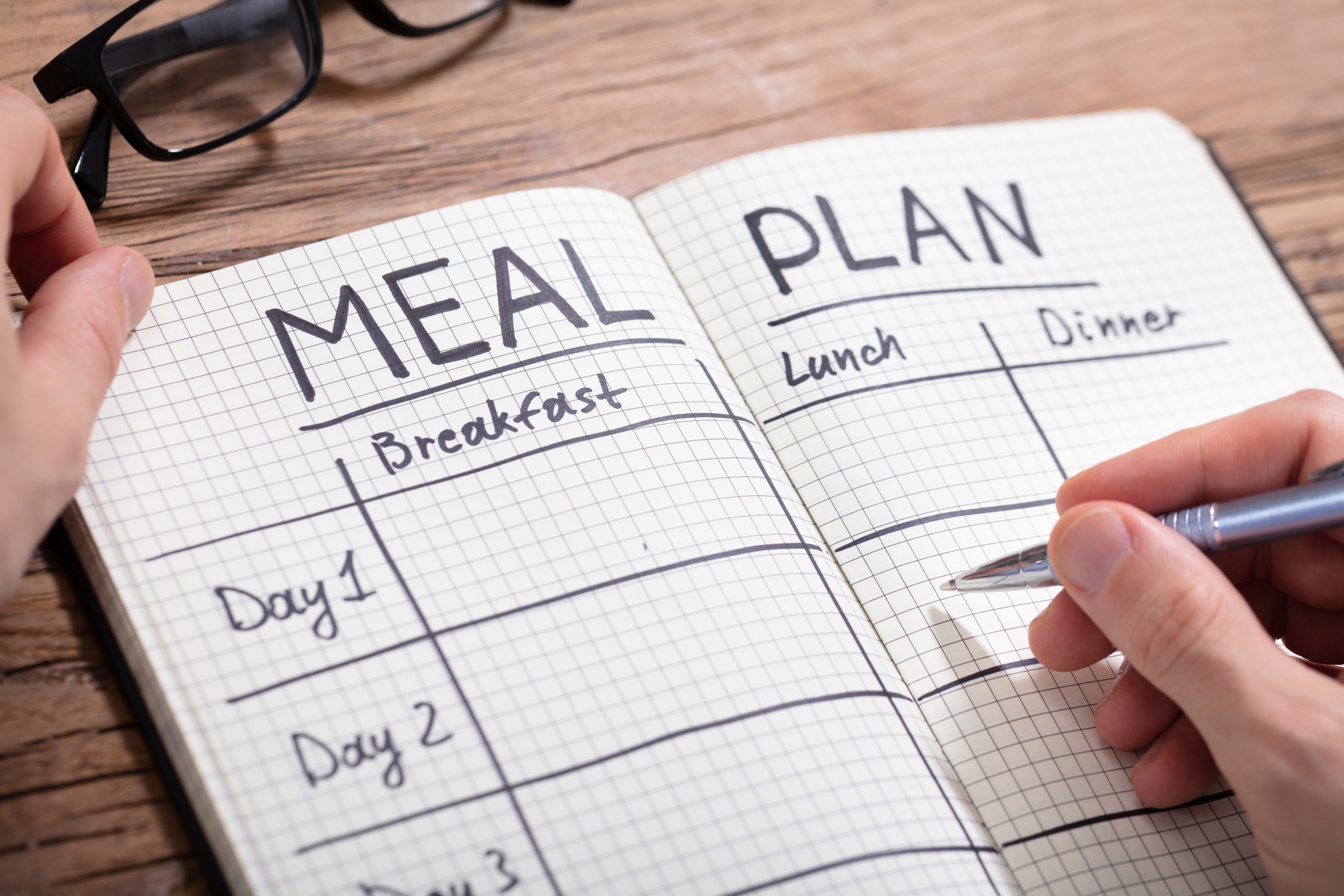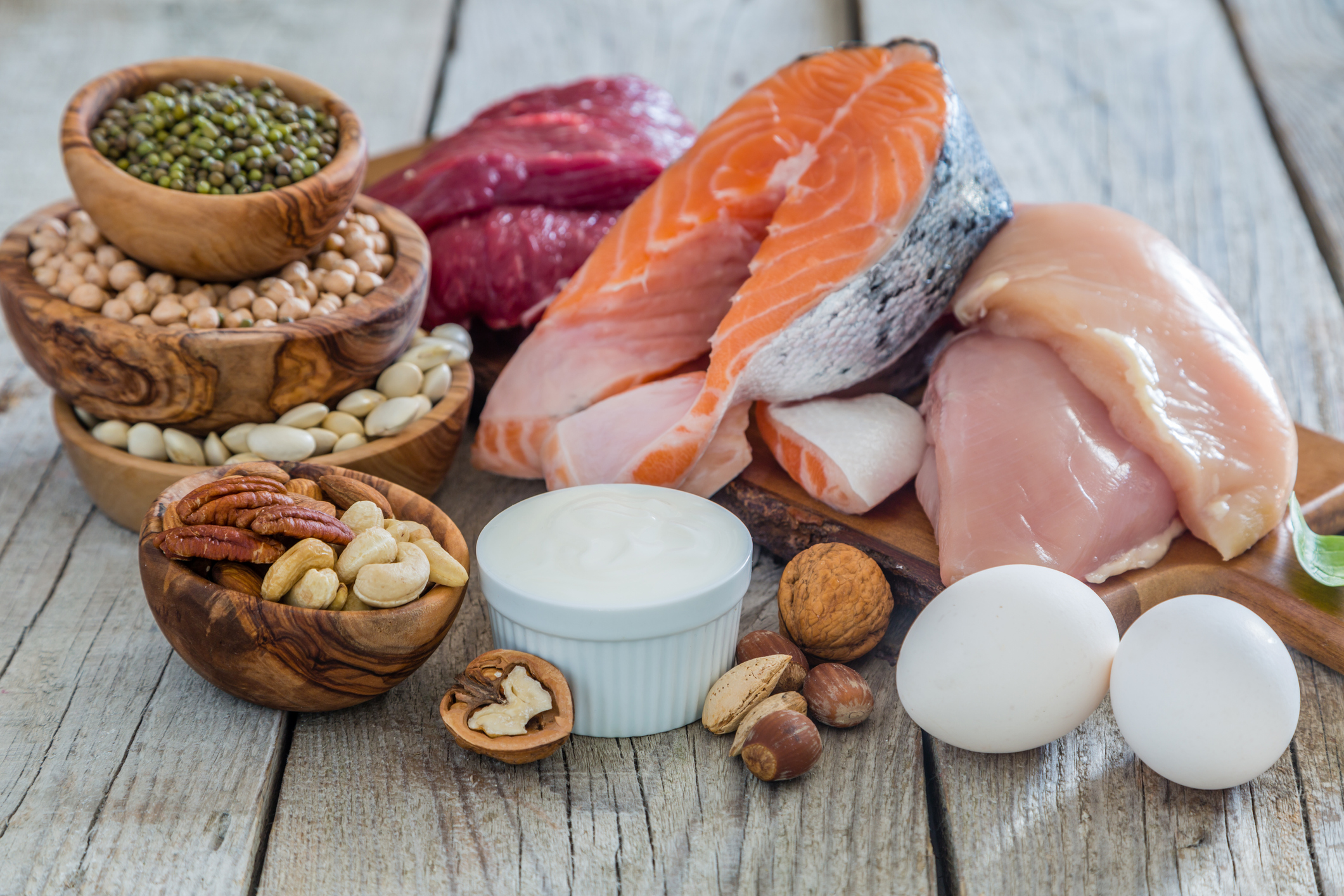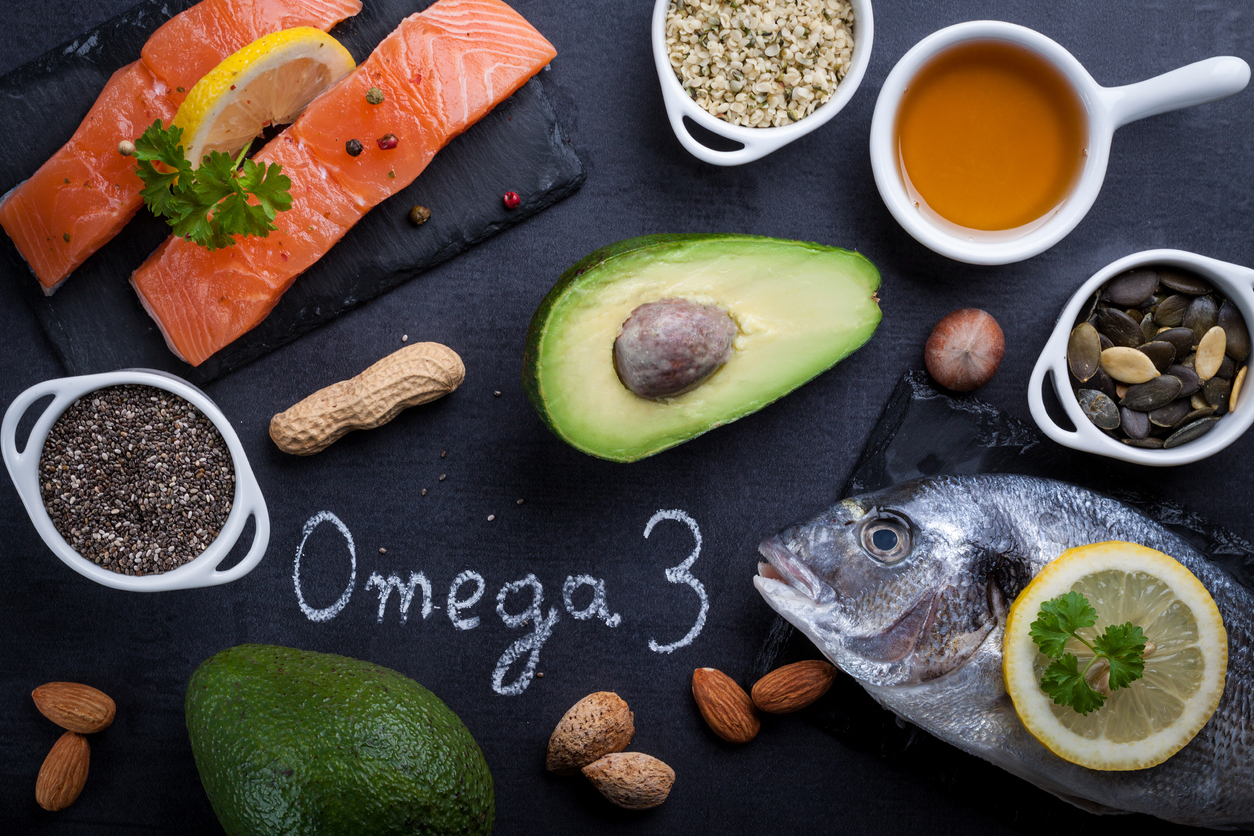A low carb diet is rich in real, unprocessed foods. Read our guide to creating the perfect low carb diet plan.
Deciding what to eat each week can be tricky, especially because we might not know what sort of food we will be in the mood for. Planning can help make your week so much easier but creating a good low carb meal plan is not just about planning meals you love, there is also a few things you might want to consider to ensure what you eat supports your overall health and wellbeing.

Carbohydrates
Everyone will have a different goal but the general recommendation is to keep carbohydrates below 130g a day. If you are using recipes from the system they will already have the carb content available, whereas it can be more difficult when you are cooking from scratch. A good starting point to creating your meal plan can be to select recipes that fit into your daily carbohydrate target.
Protein
But it’s not all about carbohydrates. A healthy low carb diet means eating natural, whole, unprocessed, foods with a focus on reducing your carbohydrate intake whilst increasing your intake of healthy fats and consuming a normal amount of protein. In relation to protein intake, this is dependent on various factors, including height, weight, age, activity type/levels and importantly, any medical conditions. If you like to track your protein intake, then it can be useful to aim for between 0.8g and 2g of protein per kilogram of your ideal body weight.

Fat
Generally, there is no need to track your fat intake unless you are experiencing a weight loss plateau in which case you might want to reduce the amount of fat you are eating and selecting recipes that have a higher vegetable content as vegetables are generally low fat.
Iron
Iron is essential as it is part of haemoglobin in your blood and helps transport oxygen from the lungs to your other vital organs. To cover your weekly needs of this mineral aim for 2 portions of red meat (150g). Some options here could include:
- Beef
- Lamb
- Venison
- Pork
- Turkey
- Oysters
Try to make sure you have at least 2 meals planned with a rich source of iron.
If you are a pescatarian, vegetarian or vegan opt for 1-2 portions daily of one of the following iron sources:
- Sardines
- Oysters
- Tofu
- Legumes
- Cashews
- Chia Seeds
- Quinoa
Omega 3
Omega-3 is vital for brain function. To cover your weekly needs try to include a portion of oily fish twice a week (150g):
- Salmon
- Sea bass
- Tuna steak
- Herring
- Mackerel
- Sardines
If you are vegan you will need to include a source of omega 3 daily, which can easily be done by for example having 1 tbsp of seeds or oils or 6 walnuts or ½ cup seaweed or edamame Some other sources include:
- Flax Seeds
- Flaxseed Oil
- Walnuts
- Walnut Oil
- Chia Seeds
- Hempseeds
- Seaweed
- Edamame
- Soybean Oil

Calcium
Calcium is important for bone and teeth health, muscle contraction and nerve function. Make sure to include a rich source of calcium daily (100g) by choosing meals that include one of the following:
- Cheese
- Dairy milk
- Greek yoghurt
- Natural yoghurt
- Sour cream
- Other dairy products
If you’re vegan you can also get calcium from sources such as:
- Calcium set tofu
- Fortified plant milk
- Kale (and other leafy green vegetables)
- Tahini
- Almonds
- Haricot Beans
Variety of vegetables (eat the rainbow)
While we all know we should be aiming for our 5 a day, eating the same 2 or 3 types of vegetables every day is not going to give you the range of nutrients you need. Try to aim for a variety of colours with your fruits and veggies, ideally seasonal as this will also help lower your environmental impact and help you with choosing with vegetables to go for each week. Vegetables are an important source of fibre in the diet.
In a day your rainbow might look something like this:
- Tomatoes
- Courgette
- Lemon
- Aubergine
- Carrot

Fibre
For gut health eating a variety of 30 different plant foods per week is thought to be ideal. This includes nuts, seeds, veggies, wholegrains, beans and pulses. Try to add different types of nuts and seeds to your breakfast yogurt bowl, mix up the beans in your next chilli and try to have a range of different vegetables in your meals to achieve this goal.
Practical advice
- Choose meals that make more than 1 portion to eat for lunch the next day or freeze for weeks ahead
- Check whether recipes use similar ingredients to make it cheaper/easier to buy in bulk and also to avoid food waste
- Check whether you can prep certain bits of meals ahead to make it easier (like chopping vegetables the night before
- Be flexible – choose a variety of meals so that if you don’t fancy one of them you can just make the other one
- Plan meals with perishables for the beginning of the week (things like fresh spinach for example wilt easily)
- Try to make it seasonal – increases your variety, more eco-friendly and generally cheaper
- Check your fridge/freezer/pantry and plan meals around what you already have, especially things that are about to go off
- Set aside time for meal planning on a day that is convenient and leaves enough time to do your food shop
- Create a month worth of meal plans then start again from the first one – the more meals plans you have the easier it will be in week where you don’t have time to plan
- Have a themed night, like taco Tuesday or Fakeaway Friday, to keep it fun
- Stay realistic – are you likely to want to cook 3 fresh meals every day? If the answer is no, then look at bulk cooking
- Modify – especially for breakfasts you can make yoghurt bowls most mornings but switch up the toppings to keep it interesting
- Stick your meal plan on your fridge & print/save recipes in advance to make it easy to access








